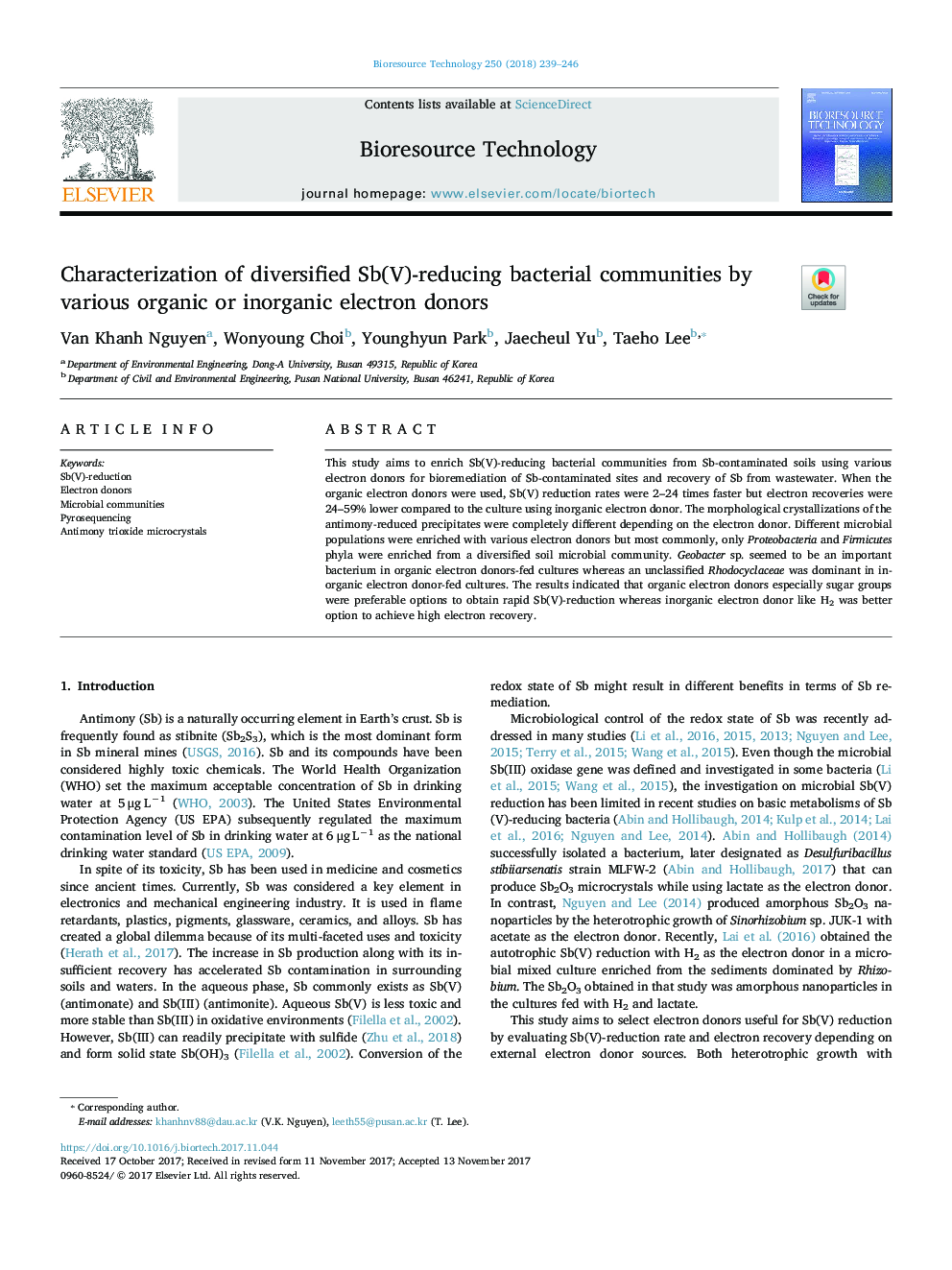| Article ID | Journal | Published Year | Pages | File Type |
|---|---|---|---|---|
| 7068710 | Bioresource Technology | 2018 | 8 Pages |
Abstract
This study aims to enrich Sb(V)-reducing bacterial communities from Sb-contaminated soils using various electron donors for bioremediation of Sb-contaminated sites and recovery of Sb from wastewater. When the organic electron donors were used, Sb(V) reduction rates were 2-24 times faster but electron recoveries were 24-59% lower compared to the culture using inorganic electron donor. The morphological crystallizations of the antimony-reduced precipitates were completely different depending on the electron donor. Different microbial populations were enriched with various electron donors but most commonly, only Proteobacteria and Firmicutes phyla were enriched from a diversified soil microbial community. Geobacter sp. seemed to be an important bacterium in organic electron donors-fed cultures whereas an unclassified Rhodocyclaceae was dominant in inorganic electron donor-fed cultures. The results indicated that organic electron donors especially sugar groups were preferable options to obtain rapid Sb(V)-reduction whereas inorganic electron donor like H2 was better option to achieve high electron recovery.
Related Topics
Physical Sciences and Engineering
Chemical Engineering
Process Chemistry and Technology
Authors
Van Khanh Nguyen, Wonyoung Choi, Younghyun Park, Jaecheul Yu, Taeho Lee,
